-
 bitcoin
bitcoin $122288.232522 USD
0.16% -
 ethereum
ethereum $4480.662914 USD
-0.22% -
 xrp
xrp $2.962747 USD
-2.32% -
 tether
tether $1.000120 USD
-0.05% -
 bnb
bnb $1145.654223 USD
-2.07% -
 solana
solana $227.105217 USD
-1.67% -
 usd-coin
usd-coin $0.999548 USD
-0.02% -
 dogecoin
dogecoin $0.250875 USD
-2.04% -
 tron
tron $0.340654 USD
-0.49% -
 cardano
cardano $0.837968 USD
-2.52% -
 hyperliquid
hyperliquid $48.960449 USD
0.06% -
 chainlink
chainlink $22.049280 USD
-1.33% -
 ethena-usde
ethena-usde $1.000404 USD
0.02% -
 sui
sui $3.586212 USD
0.20% -
 avalanche
avalanche $29.894916 USD
-4.18%
What is the relationship between Web3 and the metaverse?
Web3 and the metaverse converge to enable decentralized ownership, interoperability, and user-driven economies through blockchain, NFTs, and DAOs.
Sep 27, 2025 at 09:36 pm
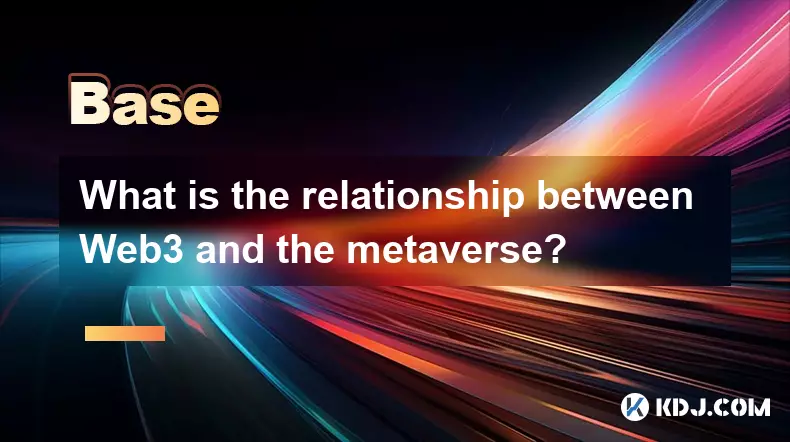
Understanding the Foundations of Web3 and the Metaverse
1. Web3 represents the next phase of internet evolution, emphasizing decentralization through blockchain technology. Unlike traditional platforms controlled by centralized entities, Web3 enables users to own digital assets and participate in governance through decentralized autonomous organizations (DAOs). This shift empowers individuals with control over their data, identity, and online interactions.
2. The metaverse is a collective virtual shared space created by the convergence of virtually enhanced physical reality and persistent digital environments. It allows users to interact with each other and digital objects in real time using avatars. While early versions exist in gaming and social platforms, the full vision includes immersive economies, workplaces, and social ecosystems.
3. At its core, the metaverse relies on persistent, interoperable digital worlds. For these spaces to function without central oversight, they require trustless systems for ownership, transactions, and identity—areas where Web3 provides essential infrastructure. Blockchain ensures verifiable scarcity and transferability of digital items like virtual land or wearables.
4. Smart contracts automate agreements within the metaverse, enabling programmable economies. These self-executing contracts govern everything from rental agreements for virtual storefronts to revenue sharing among creators. Without Web3’s underlying architecture, such automation would depend on centralized intermediaries, undermining user autonomy.
5. Digital identity in the metaverse must be portable and secure. Web3 introduces decentralized identifiers (DIDs) that allow users to maintain a consistent identity across multiple platforms without relying on corporate login systems. This reduces dependency on single providers and enhances privacy.
The Role of Tokenization in Virtual Economies
1. In the metaverse, value exchange occurs continuously through digital goods and services. Web3 introduces native tokenization, allowing every asset—from virtual clothing to concert tickets—to be represented as non-fungible tokens (NFTs) or fungible tokens. This creates transparent, auditable ownership records accessible globally.
2. Users can earn tokens by contributing content, hosting events, or providing services within virtual worlds. These tokens hold real economic value and can be traded across platforms, fostering open-market dynamics. Such incentive structures are made possible by blockchain-based reward mechanisms inherent to Web3.
3. Play-to-earn models in metaverse games exemplify this integration. Players accumulate tokens through gameplay, which can then be exchanged for other cryptocurrencies or fiat currency. This blurs the line between entertainment and labor, creating new forms of digital livelihoods supported by Web3 networks.
4. Tokenization also enables fractional ownership of high-value virtual assets, such as premium real estate plots in popular zones. Investors can purchase shares in a virtual skyscraper, earning passive income from tenant fees distributed automatically via smart contracts. This level of financial granularity was previously unattainable in closed digital ecosystems.
5. Marketplaces built on Web3 protocols allow peer-to-peer trading of metaverse assets without platform-imposed restrictions. These decentralized exchanges operate 24/7, support cross-chain compatibility, and reduce transaction costs by eliminating middlemen, making virtual commerce more efficient and inclusive.
Interoperability and User Sovereignty
1. One of the most significant promises of combining Web3 with the metaverse is true interoperability. Users should be able to take their avatars, skins, tools, and reputations from one virtual world to another seamlessly. Web3 standards like ERC-721 and ERC-1155 facilitate this cross-platform functionality through universally recognized token formats.
2. Centralized metaverses often lock users into proprietary ecosystems, limiting freedom and innovation. Web3 challenges this model by ensuring that no single entity controls access or sets arbitrary rules. Governance tokens give stakeholders voting power over protocol upgrades and policy changes, promoting community-driven development.
3. Decentralized storage solutions like IPFS and Filecoin ensure that metaverse assets are not hosted on vulnerable centralized servers but distributed across a resilient network. This prevents unilateral takedowns and preserves digital heritage even if individual projects shut down.
4. Identity portability allows users to authenticate themselves across different experiences without repeated verification processes. With wallet-based logins, a single cryptographic key pair grants secure access while maintaining anonymity or pseudonymity as desired.
5. Open-source development cultures thrive in Web3, encouraging collaboration and transparency. Metaverse projects built on public blockchains invite audits, contributions, and forks, accelerating innovation and reducing vendor lock-in risks.
Frequently Asked Questions
How do NFTs function within the metaverse?NFTs serve as unique digital certificates of ownership for virtual items such as avatar accessories, artwork, or parcels of land. They are stored on blockchains, ensuring authenticity and preventing duplication. Users can buy, sell, or display these assets across compatible metaverse platforms.
Can the metaverse exist without Web3?Yes, limited versions of the metaverse can operate on centralized infrastructures, as seen in some online games and social VR apps. However, these lack true ownership, open economies, and user governance. A fully realized, equitable metaverse requires Web3 principles to avoid corporate dominance and enable decentralized participation.
What role do DAOs play in metaverse governance?DAOs allow communities to collectively make decisions about virtual world policies, funding allocations, and feature developments. Members vote using governance tokens, ensuring that those with economic stake influence direction. This replaces top-down control with democratic, transparent processes.
Are there risks associated with merging Web3 and the metaverse?Security vulnerabilities, regulatory uncertainty, and scalability limitations pose challenges. Smart contract bugs can lead to fund losses, while unclear legal frameworks complicate enforcement of digital rights. Additionally, current blockchain networks may struggle to handle the massive data throughput required for seamless immersive experiences.
Disclaimer:info@kdj.com
The information provided is not trading advice. kdj.com does not assume any responsibility for any investments made based on the information provided in this article. Cryptocurrencies are highly volatile and it is highly recommended that you invest with caution after thorough research!
If you believe that the content used on this website infringes your copyright, please contact us immediately (info@kdj.com) and we will delete it promptly.
- BlockDAG, DOGE, HYPE Sponsorship: Crypto Trends Shaping 2025
- 2025-10-01 00:25:13
- Deutsche Börse and Circle: A StableCoin Adoption Powerhouse in Europe
- 2025-10-01 00:25:13
- BlockDAG's Presale Buzz: Is It the Crypto to Watch in October 2025?
- 2025-10-01 00:30:13
- Bitcoin, Crypto, and IQ: When Genius Meets Digital Gold?
- 2025-10-01 00:30:13
- Stablecoins, American Innovation, and Wallet Tokens: The Next Frontier
- 2025-10-01 00:35:12
- NBU, Coins, and Crypto in Ukraine: A New Yorker's Take
- 2025-10-01 00:45:14
Related knowledge

How does cryptocurrency achieve decentralization?
Sep 30,2025 at 04:37am
Understanding the Foundation of Decentralization in Cryptocurrency1. Cryptocurrency achieves decentralization primarily through the use of blockchain ...
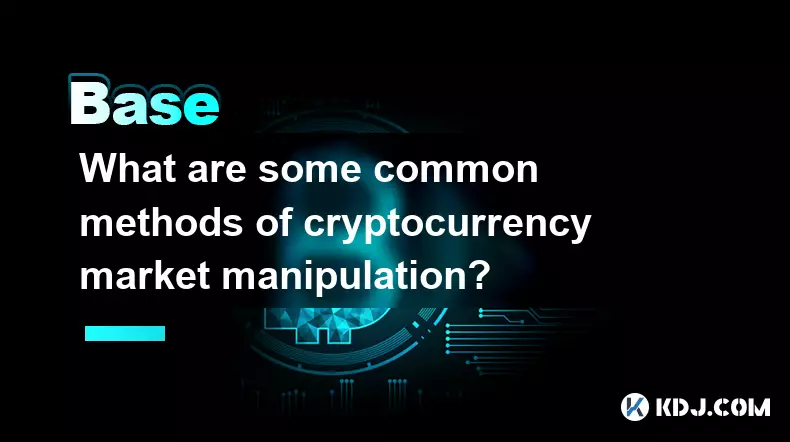
What are some common methods of cryptocurrency market manipulation?
Sep 27,2025 at 02:55am
Wash Trading and Its Impact on Market Perception1. Wash trading involves an individual or entity simultaneously buying and selling the same cryptocurr...
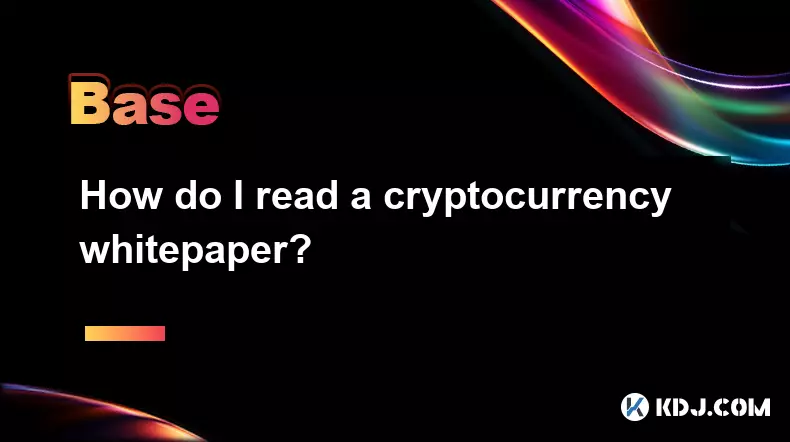
How do I read a cryptocurrency whitepaper?
Sep 27,2025 at 05:54am
Understanding the Structure of a Cryptocurrency Whitepaper1. Begin by identifying the executive summary, which outlines the project’s core vision and ...
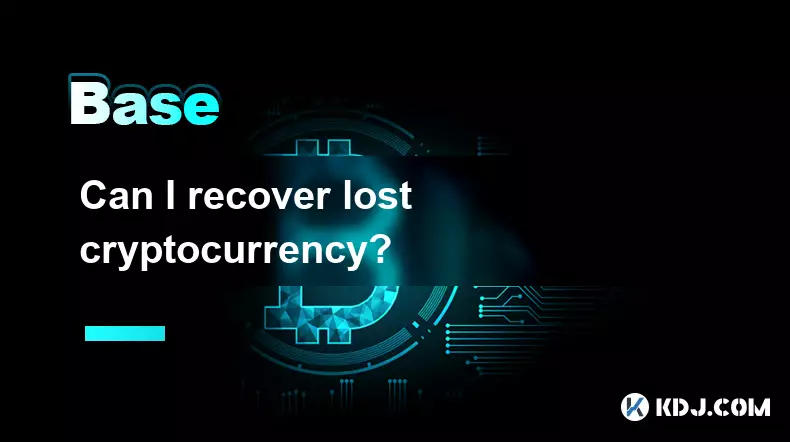
Can I recover lost cryptocurrency?
Sep 25,2025 at 08:18am
Understanding the Nature of Cryptocurrency Loss1. Cryptocurrency operates on decentralized networks, meaning there is no central authority to reverse ...
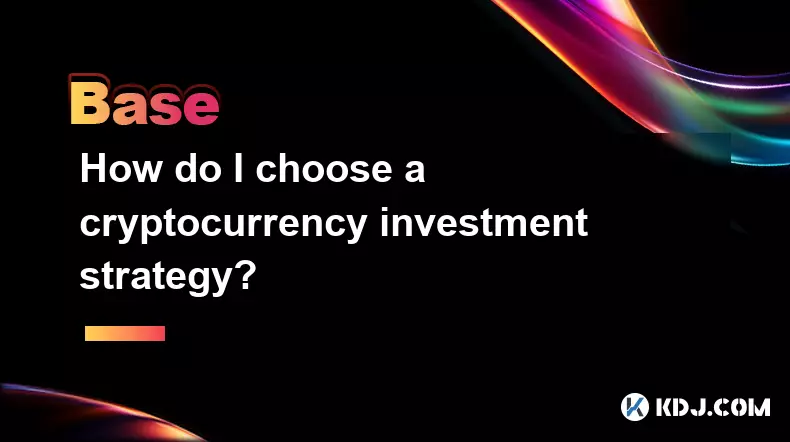
How do I choose a cryptocurrency investment strategy?
Sep 27,2025 at 03:55pm
Understanding Risk Tolerance in Crypto Investing1. Assessing personal risk tolerance is a foundational step when entering the cryptocurrency market. V...
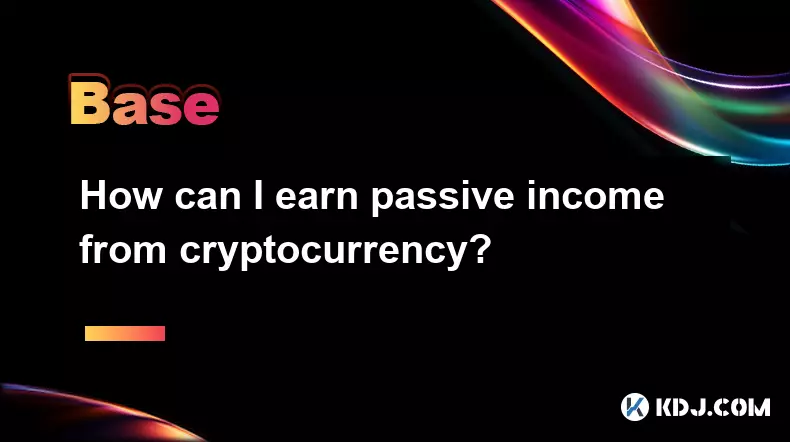
How can I earn passive income from cryptocurrency?
Sep 23,2025 at 10:18am
Staking Cryptocurrencies for Regular Returns1. Many blockchain networks operate on a proof-of-stake (PoS) consensus mechanism, allowing users to earn ...

How does cryptocurrency achieve decentralization?
Sep 30,2025 at 04:37am
Understanding the Foundation of Decentralization in Cryptocurrency1. Cryptocurrency achieves decentralization primarily through the use of blockchain ...

What are some common methods of cryptocurrency market manipulation?
Sep 27,2025 at 02:55am
Wash Trading and Its Impact on Market Perception1. Wash trading involves an individual or entity simultaneously buying and selling the same cryptocurr...

How do I read a cryptocurrency whitepaper?
Sep 27,2025 at 05:54am
Understanding the Structure of a Cryptocurrency Whitepaper1. Begin by identifying the executive summary, which outlines the project’s core vision and ...

Can I recover lost cryptocurrency?
Sep 25,2025 at 08:18am
Understanding the Nature of Cryptocurrency Loss1. Cryptocurrency operates on decentralized networks, meaning there is no central authority to reverse ...

How do I choose a cryptocurrency investment strategy?
Sep 27,2025 at 03:55pm
Understanding Risk Tolerance in Crypto Investing1. Assessing personal risk tolerance is a foundational step when entering the cryptocurrency market. V...

How can I earn passive income from cryptocurrency?
Sep 23,2025 at 10:18am
Staking Cryptocurrencies for Regular Returns1. Many blockchain networks operate on a proof-of-stake (PoS) consensus mechanism, allowing users to earn ...
See all articles










































































